Spotify Advertising Guide and Tutorial
Advertising on Spotify, a growing platform worldwide, is of great importance to businesses, individuals, and artists. By providing accurate user performance analysis tools, Spotify allows advertisers to create fully personalized advertising based on age, gender, language, geographic location, musical tastes, users’ listening behavior, etc.
This article explains everything about advertising on Spotify, from choosing an advertising format to using Spotify Ad Studio. Stay tuned.
Why advertise on Spotify?
Spotify is one of the world’s largest music and podcast streaming platforms and has created an excellent environment for professional advertising for businesses and artists.
1. Access to a diverse and broad audience
Spotify already has 300 million users from 170 countries, so you can reach audiences anywhere in the world.
2. Variety in music and podcasts
With a vast library of music and podcasts spanning different genres, Spotify caters to audiences of all tastes. This variety allows advertisers to create targeted ads that resonate with the audience’s preferences, making them feel understood.
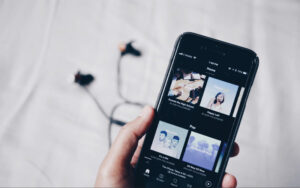
3. Precise audience targeting
a) Demographic targeting: This allows you to select your audience based on age, gender, language, and geographic region.
b) Targeting based on user behavior: Spotify targets ads based on users’ listening behavior, such as music genre or user activity time.
c) Targeting based on device: You can target your audience based on the user’s device (tablet, mobile, computer, etc.).
4. Variety in advertising formats
Spotify has provided advertising capabilities for every business by creating various advertising formats (image, audio, video, etc.).
5. Providing practical analysis
Spotify’s advanced algorithms provide accurate and live reports on campaign status, such as click-through rate, conversion rate, and user interaction rate. This practical analysis empowers advertisers with the information they need to make informed decisions and optimize their campaigns.
6. High and natural audience interaction
High audience interaction: According to Spotify, by combining advertising with the listening experience of users who are listening to a podcast or their favorite music, an ad break [an advertisement that is played between songs or parts of a podcast] can attract 93% of the user’s attention to the ad.
Providing suggestions for better advertiser-audience interaction: Spotify recommends advertisers create advertisements tailored to the user’s musical taste. For example, if a user listens to soft classical music, it recommends serving an ad with soft classical background music.
7. Spotify’s constant updates and innovations
Spotify has always sought to innovate its technologies to provide advanced tools for its advertisers and users and enhance the customer experience.
Who can benefit from advertising on this platform?
Artists: Spotify advertising is beneficial in the music field. It helps artists attract more listeners and increases album and concert sales.
Large and medium-sized brands: Advertising on this platform increases brand awareness or product sales in different areas.
Influencers: They can multiply their followers by advertising smartly on this platform.
Spotify can benefit all businesses and individuals due to its access to a large number of users with diverse tastes and advertising models. From artists and big brands to influencers, travel companies, etc

Types of Ads on Spotify
1. Audio Ads
The format of this type of ad is audio. When the user actively listens to their favorite music or podcast, your ad is played, which users of the free version of Spotify cannot refuse. Spotify plays these ads to them by considering the user’s behavior.
The duration of audio ads is 15 to 30 seconds of audio with a call-to-action (CTA) button on the user’s screen to view the desired song, website, or product.
2. Video Ads
Standard video ads: They are played to users in two ways: before the music or podcast starts or in the middle of the music or podcast. These ads show the audience when the audience looks at the program to ensure that the user has seen the video ad.
Rewarded Video Ads: By viewing this type of ad, users do not receive any ads for 30 minutes, which increases the incentive to view this advertising model.
Video ads are a maximum of 30 seconds and, in addition to being visually appealing, are suitable for conveying complex ads.
3. Display Ads
This advertising model comes in two formats: image banners and sponsored display covers.
Image banners: Displayed in various parts of the site and application, including the home page, search section, album pages, etc.
Sponsored display covers: This type of advertising is usually displayed in playlists that users follow. Due to its display in popular playlists, this type of advertising interacts long-term with users.
4. Active Advertising
Dynamic Ad Insertion (DAI) technology is one of Spotify’s most advanced technologies for providing professional advertising to advertisers. This technology allows advertisers to actively target their ads based on the behavior and location of podcast listeners. DAI is a type of advertising that is dynamically and purposefully displayed while podcasts are being played on Spotify. Unlike traditional ads pre-recorded in podcasts, this method uses audience data to display relevant ads in real-time.
Spotify advertising costs
The cost of advertising on Spotify depends on several factors, and as these factors change, the cost of each campaign decreases or increases. Here are some of the most important ones:
Advertising types
Spotify offers different types of advertising, each with a different cost. These ads include audio, video, and display ads. For example, audio and video ads usually cost less than video ads.
Audio ads: Usually between $15 and $25 per thousand views.
Video ads: Cost more due to their greater appeal, usually between $20 and $30 per thousand views.
Image ads: Cost usually between $10 and $20 per thousand views
Sponsored ads: Placed on the audience’s favorite playlists and cost more due to their high engagement.
Note that the cost of advertising on Spotify depends on various factors and, therefore, varies and can be higher or lower than the costs mentioned.
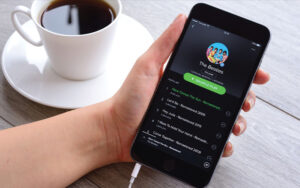
Number of times and duration of advertising on Spotify
The cost of advertising on Spotify is measured based on the number of times your ads are shown (Impressions) and the duration of the advertisement. The more times your ads are shown and the longer they are displayed, the higher the cost of advertising.
At times when users use Spotify the most (i.e. when Spotify’s subscriber usage is at its peak), the cost of displaying ads increases. Also, advertising on special occasions such as Christmas can be more expensive.
Precise targeting of ads on Spotify
One of the great things about the Spotify platform is the ability to target your audience precisely. You can show your ads to specific groups of people (for example, a specific age range or a specific geographic region).
How to Set Up Spotify Ads
Now that you know the costs of advertising on Spotify, let’s move on to the next step and look at how to register ads on this platform.
Creating an Account on Spotify for Advertisers
The first step to registering ads on Spotify is to create an account in the Spotify Ads section. To do this, go to the Spotify for Advertisers website at ads.spotify.com and click the Create an ad option.
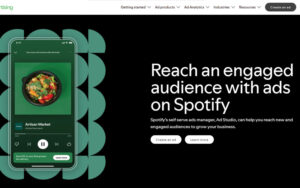
Next, click the sign up for Spotify option and then enter your email and password.
Enter your gender and date of birth, confirm Spotify’s rules, and click continue.
If Spotify is banned and is highly sensitive to IP change tools, if you are unsuccessful in creating an account, you can get help from Jannavita freelancers in the account creation services section.
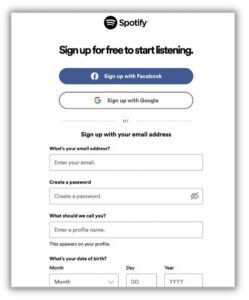
Setting Up Your Campaign
After creating your account, log in to your Spotify Ads dashboard. In this section, you can set up your advertising campaigns. To do this, click on the “Create Campaign” option.
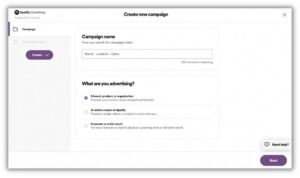
The first form that appears requires you to register your company information.
Business Name: In this section, you must enter the name of your business.
Legal Entity: The legal entity is the legal name of the business (which can be the same as the Business Name)
Business type: In this section, select the type of your business. The drop-down menu offers several options, and you must select the option that most closely matches your business.
Business Industry: In this section, select the industry in which your business operates.
Country or Region: Specify the country or region of your operation. (You must select a country other than Iran). The country chosen must match the country information on your bank card.
After filling in all the information, click on the “Create” button to proceed to the next step, which is the final review and approval.
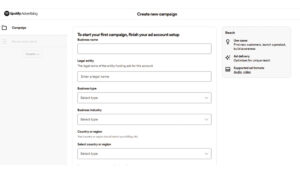
3. Set advertising goals
This form belongs to the set advertising goals section. Here, you choose the goal of your advertising based on the needs and objectives of your business. Let’s review the sections of this form:
Reach: The goal is to build branding, and selecting this option will show your brand to more people.
Impressions: Along with branding, it shows ads repeatedly to the audience.
Clicks: The goal is to increase the clicks on your ad.
Podcast streams: This option is in experimental mode, but it will help you have Spotify show your podcasts to people who are likely to be interested in your content.

4. Target audience
After choosing the advertising goal, you need to determine your target audience. Spotify allows you to target your audience based on age, gender, location, music preferences, and other criteria. This step is essential because accurate targeting can increase the efficiency of your ads.
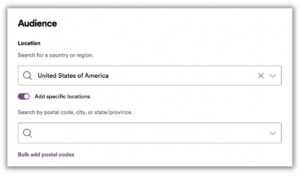
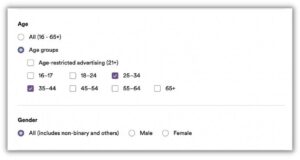
5. Set Budget and Schedule
In this step, you must set your advertising budget and schedule your campaign. You can specify a daily budget or the entire campaign budget, as well as the start and end times of your campaign.
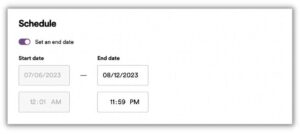
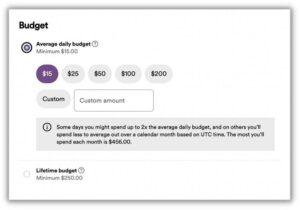
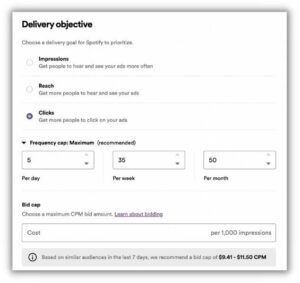
6. Create an Ad and Upload Ad Content
After completing the budget and schedule steps, you must create and upload your ad content. If you have chosen audio ads, upload your audio file. For banner or video ads, upload the desired video image file. Spotify has online tools that will help you create your ad content in the best possible way.
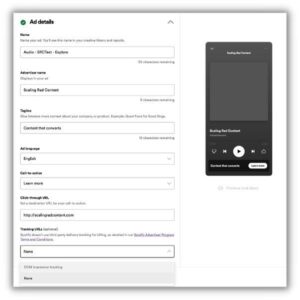
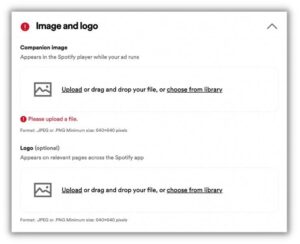
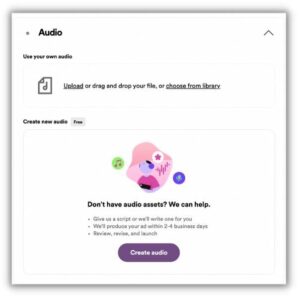
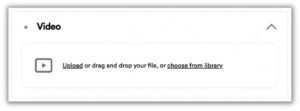
7. Preview and Approval
After uploading the content, you will see a preview of your ad. Make sure there are no problems, and then approve your ad.
8. Payment and Address Information
At this stage, you must add your address and payment information, such as your credit card.
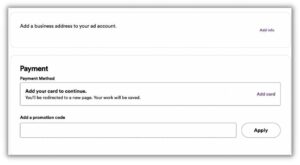
Once you’ve launched your campaign, you can see how your ads perform on your Spotify dashboard. Spotify provides analytics tools that allow you to see the number of plays, clicks, and ad conversions. You can improve your campaign to achieve the best possible results using this information.
Essential tips for success with Spotify ads
1. Engaging content
Your ad’s content should be engaging and creative to capture the audience’s attention. Try to express your message clearly and concisely, and use catchy music and sounds to complement the genre.
2. Accurate Targeting
Finding your target audience is one of the most critical factors in the success of an advertising strategy. Spotify’s advanced technologies can help you find your target audience precisely.
3. Continuous review and improvement
After launching your campaign, carefully review the results and make necessary ad changes. Continuously improving your campaigns can increase the efficiency of your advertising.
4. Using multiple formats in Spotify advertising
Try using different advertising formats (audio, video, banner) in your campaigns to optimize your advertising costs and get the highest return on investment.
Conclusion
Advertising on Spotify can significantly help any business grow. Spotify uses the best technologies to display advertisements based on the user’s age, gender, language, geographical region, and listening behavior. Spotify advertising also comes in three modes: audio, video, and visual. According to Spotify’s report, advertising has attracted 93% of the user’s attention during commercial breaks during an hour of favorite music or podcast. High audience interaction and the naturalness of the advertisements increase the efficiency of advertising.